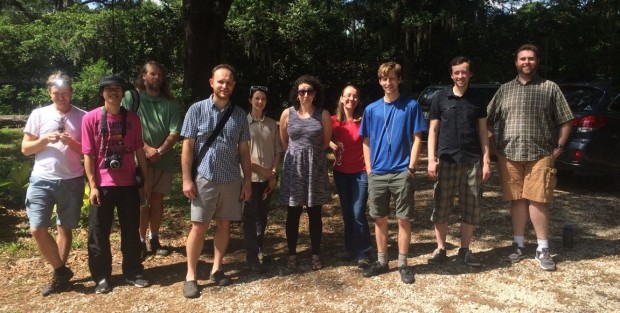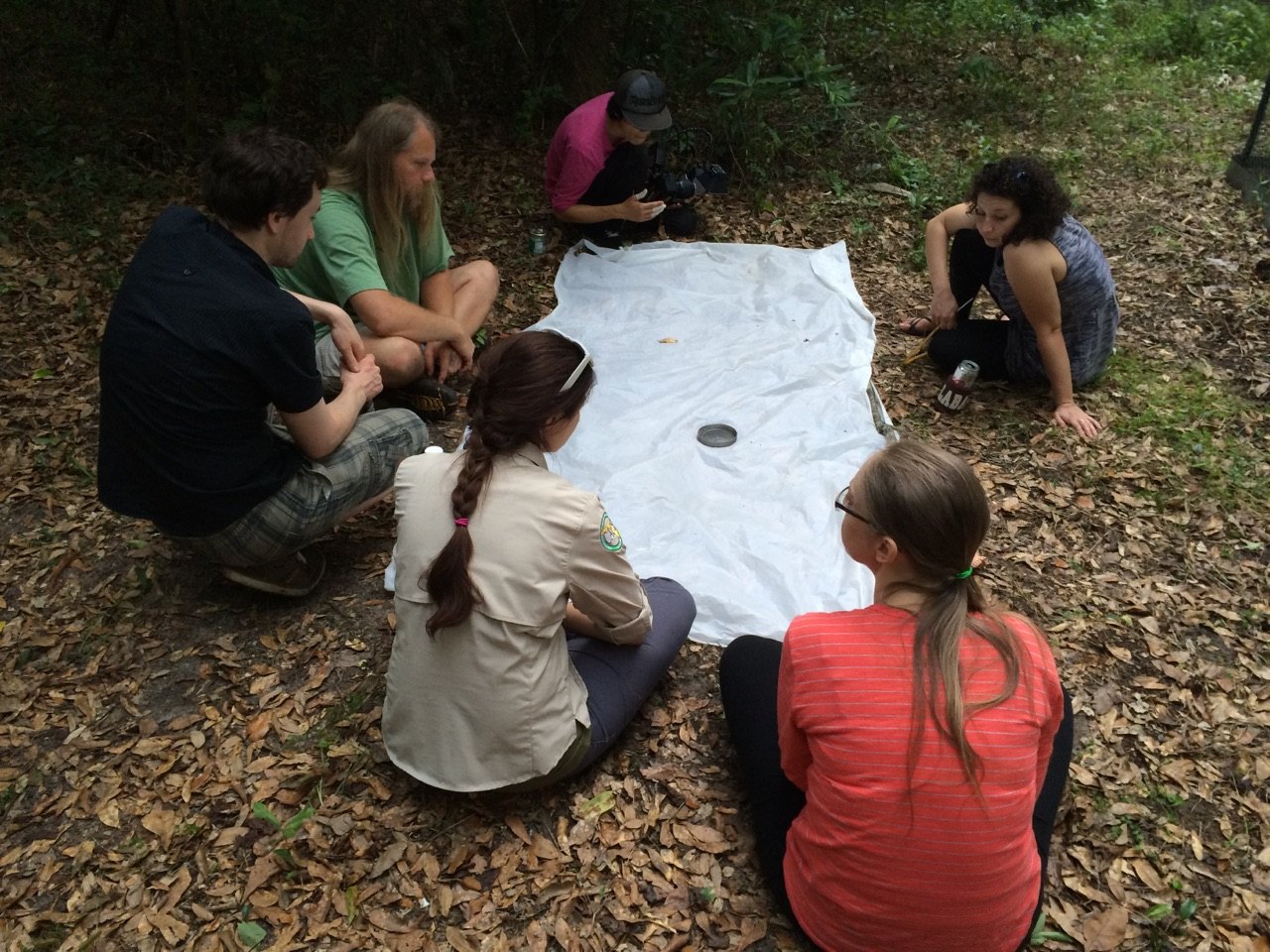Student award Amazing Pests
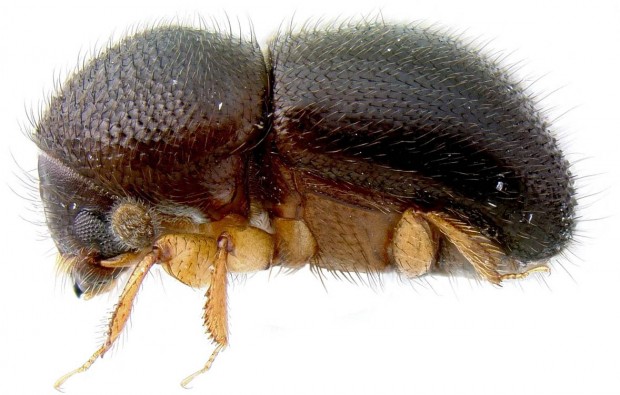
Like this bizarre Cyclorhipidion spurlinum, a newly discovered ambrosia beetle from Papua New Guinea, many insects belong to groups called “pests”, but the organisms themselves are a source of wonder to an observant entomologist.
Now in its sixth year: 2017
The purpose of the award
The award serves to promote the study of unexplored aspects of natural history of insect pests. Due to their success in the competition with humans, these insect groups are often condemned as harmful, while their remarkable qualities and peculiarities remain unnoticed. For example, only a handful of species of bark and ambrosia beetles cause damage to humans, while most of the remaining 7,500 species are fascinating organisms, cute and bizarre, living extraordinary lifestyles, and barely known to humans. The same discrepancy holds for many other insect groups. The main purpose of the award is to foster communication between fundamental and applied young entomologists, and increase their appreciation for each other’s study organisms and research methods.
The award
$500 awarded annually to a single recipient. The award is sponsored by the TREE Foundation in Sarasota, FL, and conferred by the Ambrosia Symbiosis Research Group (Jiri Hulcr and Andrea Lucky at University of Florida, Rob Dunn at North Carolina State University, and Anthony I. Cognato at Michigan State University).
Who is eligible
University students regardless of their geographic location (must be in student status at the time of submission of the competing manuscript)
Due date
Applications are due on December 31st, 2017.
Selection criteria and conditions
The selection committee will award $500 to the student who in the given year publishes the most interesting and inspiring research paper on insects which are usually regarded as pests. There are three conditions for consideration:
- the work may address any aspect of insect pest systematics, diversity, ecology, and other areas, but its main focus must not be consequences of such species to humans or pest management.
- the study must be at least “in print” in a scientific peer-reviewed journal by the annual deadline of the award,
- the applicant must be a student at the time of the application submission.
- the applicant must be the first author on the submitted paper.
Previous years
For the winner of the 2016 competition, click here.
For the winners of the 2015 competition, click here.
For the winners of the 2014 competition, click here.
For the winners of the 2013 competition, click here.
How to apply
Please send a brief e-mail to hulcr@ufl.edu containing 1) a few words about yourself, 2) a contact information of a faculty member who can confirm your student status, 3) a one-sentence summary of your discovery, and 4) the competing publication as an attachment. There are no forms to fill out.
Please send any further inquiries to hulcr@ufl.edu.
Please Donate! Your support will directly benefit the students.
Congratulations, winner of 2016!
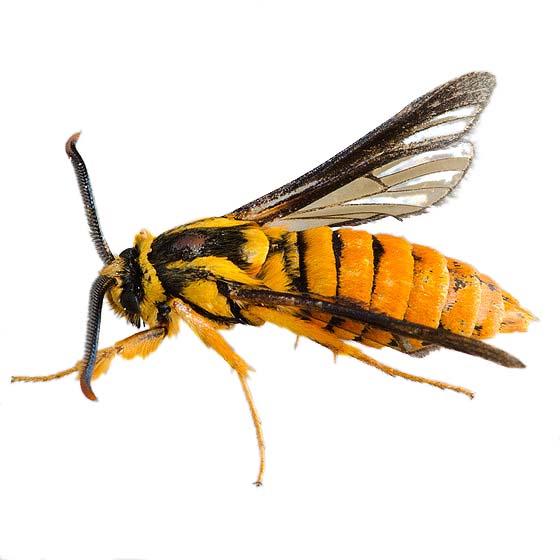
Like this beautiful Paranthrene simulans, many insects pests are worth studying for more than how to kill them. A moth that looks like a hornet but is soft on touch, and whose caterpillar doesn’t eat plants but drills tunnels in living oak wood… is it a pest or is it a biological wonder? Photo © Mark Dreiling
Annual Student Award for the Appreciation for the Biology of Insect Pests
We are proud to announce the winner for the fifth year of the Award: 2016. A great number of papers was submitted, perhaps the highest quality so far. Submissions were received from students all around the world, all works of great passion for insects, full of intriguing discoveries. The committee has decided on a single winner. The prize of $500 will go to:
Daniel Peterson, University of Massachusetts-Amherst, Massachusetts, USA
for his article “Micro- and Macroevolutionary Trade-Offs in Plant-Feeding Insects” published in American Naturalist, December 2016: “By fitting host-use data for Hemiptera and Lepidoptera to phylogenetic models, we found that neither long- nor short-term evolutionary trade-offs explain host-use specialization in these two major orders of plant-feeding insects.”
Congratulations, Daniel and coauthors! Thank you for your discoveries, and for your interest in the wonders of insects that are sometimes called pests. Our sincere thanks also go to all other students who submitted their papers. The complete list of submitted papers is below (see how great they were!).
The committee is not accepting applications in 2017. Please check back in 2018.
The award is supported by the TREE Foundation in Sarasota, FL, and conferred by the Ambrosia Symbiosis Research Group (Jiri Hulcr and Andrea Lucky at University of Florida, Rob Dunn at North Carolina State University, and Anthony I. Cognato at Michigan State University). Please send any further inquiries to hulcr@ufl.edu.
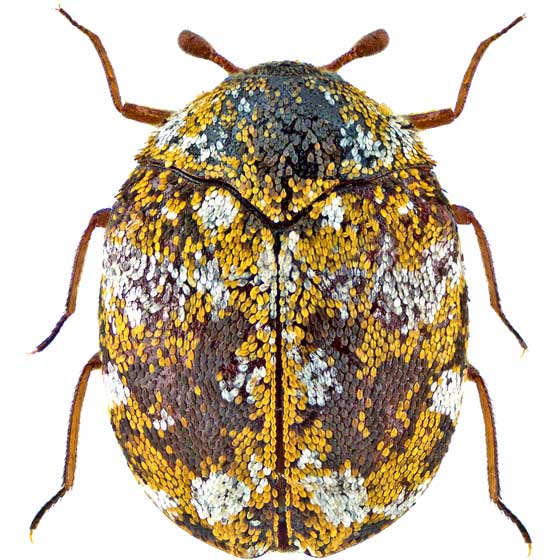
To most, this carpet beetle Anthrenus is just a domestic pest. But look closely, and you will see that it’s covered with specks of gold and silver. Why? No one knows… Photo Udo Schmidt, www.kaefer-der-welt.de
The list of papers submitted in 2016 that fulfilled all criteria
- Adekunle Adesanya: Host suitability and diet mixing influence activities of detoxification enzymes in adult Japanese beetles
- Andrei Bombin: The changing biodiversity of Alabama Drosophila: important impacts of seasonal variation, urbanization, and invasive species
- Andrew Bartlow: Walk or ride? Phoretic behaviour of amblyceran and ischnoceran lice
- Charles C. Y. Xu: Spider Web DNA: A New Spin on Noninvasive Genetics of Predator and Prey
- Derek A. Woller: Melanoplus foxi Hebard, 1923 (Orthoptera: Acrididae: Melanoplinae) rediscovered after almost 60 years using historical field notes connected to curated specimens
- Dineshkumar Kandasamy: Volatile Organic Compounds Emitted by Fungal Associates of Conifer Bark Beetles and their Potential in Bark Beetle Control
- Karl Roeder: From cryptic herbivore to predator: stable isotopes reveal consistent variability in trophic levels in an ant population
- Katrin Fitza: Host specificity and diversity of Amylostereum associated with Japanese siricids
- Loïc Dohet: Bacterial and fungal symbionts of parasitic Dendroctonus bark beetles
- Michal Filipiak: Nutritional dynamics during the development of xylophagous beetles related to changes in the stoichiometry of 11 elements
- Mohamad Haris Hussain: The efficacy of of synthetic food baits in capturing red palm weevil, Rhynchophorus ferrugineus (Coleoptera: Curculionidae) in campus area of Universiti Malaysia Terengganu
- Sulochana Paduyal: Field evaluation of the long-lasting treated storage bag, deltamethrin
- Veronica Rivi: Genomic and Cytogenetic Localization of the Carotenoid Genes in the Aphid Genome
- Yuan Zeng: Characterization of Antibacterial Activities of Eastern Subterranean Termite, Reticulitermes flavipes, against Human Pathogens
Student Award for the Appreciation for the Natural History of Insect Pests 2016

Like this bizarre Cyclorhipidion spurlinum, a newly discovered ambrosia beetle from Papua New Guinea, many insects belong to groups called “pests”, but the organisms themselves are a source of wonder to an observant entomologist.
Now in its fifth year: 2016
The purpose of the award
The award serves to promote the study of unexplored aspects of natural history of insect pests. Due to their success in the competition with humans, these insect groups are often condemned as harmful, while their remarkable qualities and peculiarities remain unnoticed. For example, only a handful of species of bark and ambrosia beetles cause damage to humans, while most of the remaining 7,500 species are fascinating organisms, cute and bizarre, living extraordinary lifestyles, and barely known to humans. The same discrepancy holds for many other insect groups. The main purpose of the award is to foster communication between fundamental and applied young entomologists, and increase their appreciation for each other’s study organisms and research methods.
The award
$500 awarded annually to a single recipient. The award is sponsored by the TREE Foundation in Sarasota, FL, and conferred by the Ambrosia Symbiosis Research Group (Jiri Hulcr and Andrea Lucky at University of Florida, Rob Dunn at North Carolina State University, and Anthony I. Cognato at Michigan State University).
Who is eligible
University students regardless of their geographic location (must be in student status at the time of submission of the competing manuscript)
Due date
Applications are due on December 31st, 2016.
Selection criteria and conditions
The selection committee will award $500 to the student who in the given year publishes the most interesting and inspiring research paper on insects which are usually regarded as pests. There are three conditions for consideration:
- the work may address any aspect of insect pest systematics, diversity, ecology, and other areas, but its main focus must not be consequences of such species to humans or pest management.
- the study must be at least “in print” in a scientific peer-reviewed journal by the annual deadline of the award,
- the applicant must be a student at the time of the application submission.
- the applicant must be the first author on the submitted paper.
Previous years
For the winners of the 2015 competition, click here.
For the winners of the 2014 competition, click here.
For the winners of the 2013 competition, click here.
How to apply
Please send a brief e-mail to hulcr@ufl.edu containing 1) a few words about yourself, 2) a contact information of a faculty member who can confirm your student status, 3) a one-sentence summary of your discovery, and 4) the competing publication as an attachment. There are no forms to fill out.
Please send any further inquiries to hulcr@ufl.edu.
Congratulations 2015 Winner!

Like this beautiful Paranthrene simulans, many insects pests are worth studying for more than how to kill them. A moth that looks like a hornet but is soft on touch, and whose caterpillar doesn’t eat plants but drills tunnels in living oak wood… is it a pest or is it a biological wonder? Photo © Mark Dreiling
Annual Student Award for the Appreciation for the Biology of Insect Pests
We are proud to announce the winner for the fourth year of the Award: 2015. A great number of papers was submitted, perhaps the highest quality so far. Submissions were received from students all around the world, all works of great passion for insects, full of intriguing discoveries. The committee has decided on the single winner. The prize of $500 will go to:
Andrea Lee Lawrence, University of Sydney, Australia
for her article “Evaluation of the bacterial microbiome of two flea species using different DNA-isolation techniques provides insights into flea host ecology” published in FEMS Microbiology: “Using a flea model, our paper shows that next-generation deep-sequencing can be used for detection of bacterial pathogens circulating at low levels in vector insects with simultaneous evaluation of microbial dynamics and flea biology, in this case revealing that host ecology drives low abundance bacterial diversity and that native echidna fleas host a significantly richer microbiome compared to the most common flea in the world, the cat flea.”
Congratulations, Andrea! Thank you all for your discoveries, and for your interest in the wonders of insect sometimes called pests. Our sincere thanks also go to all other students who submitted their papers. The complete list of submitted papers is below (see how great they were!).
This award serves to promote the study of unexplored aspects of natural history of insect pests. For more information on the award, and for submission of a paper for the year 2016 click here.
The award is supported by the TREE Foundation in Sarasota, FL, and conferred by the Ambrosia Symbiosis Research Group (Jiri Hulcr and Andrea Lucky at University of Florida, Rob Dunn at North Carolina State University, and Anthony I. Cognato at Michigan State University). Please send any further inquiries to hulcr@ufl.edu.

To most, this carpet beetle Anthrenus is just a domestic pest. But look closely, and you will see that it’s covered with specks of gold and silver. Why? No one knows… Photo Udo Schmidt, www.kaefer-der-welt.de
The complete list of papers submitted in 2015
- Jörg G. Stephan, Swedish University of Agricultural Sciences
How far away is the next basket of eggs? Spatial memory and perceived cues shape aggregation patterns in a leaf beetle. Ecology. The leaf beetle Phratora vulgatissima must employ some kind of spatial memory during oviposition because it is modulating the distances between egg clutches on a plant and it apparently also is more sensitive to the indirectly perceived number of conspecifics than the directly perceived number of conspecific eggs in evaluating the occupancy of a plant individual. - Duong T. Nguyen, Western Sydney University, Australia
Polyploidy versus endosymbionts in obligately thelytokous thrips. BMC Evolutionary Biology. I established genetic evidence for polyploidy as underlying mechanism for thelytokous reproduction in the invasive, economically important horticultural greenhouse pest Heliothrips haemorrhoidalis (and for thrips in general), while reproductive manipulators such as Wolbachia and Cardinium bacteria were excluded as contributing factors in the reproduction of this thrips species. - Yuen Han, Wageningen University, the Netherlands
Parasitic Manipulation of Host Behaviour: Baculovirus SeMNPV EGT Facilitates Tree-Top Disease in Spodoptera exigua Larvae by Extending the Time to Death. Insects. We investigated the mechanism by which the baculovirus SeMNPV induces tree-top disease (climbing to elevated positions prior to death) in caterpillar hosts and found that the viral egt gene facilitates baculovirus-induced tree-top disease by extending the larval time to death. Caterpillars infected with a mutant virus lacking the egt gene died before the onset of tree-top disease. - Ashley Mortensen, University of Florida
A scientific note on the prevalence of the cordovan phenotype in the African-derived honey bee population in the Southeastern United States. Apidologie. Discovery of recessive color mutant (cordovan), that was previously believed to only occur in European honey bees, in African honey bees. - Ashley Mortensen (2) , University of Florida
The frequency of African (Apis mellifera scutellata Lepeletier) matrilineal usurpation of managed European-derived honey bee (A. mellifera L.) colonies in the southeastern United States. Insectes Sociaux. A field study conducted to determine if African honey bee swarms actively take over (usurp) managed European honey bee colonies - Stephen Seaton, Murdoch University
Outbreak of Phoracantha semipunctata in Response to Severe Drought in a Mediterranean Eucalyptus Forest. Forests The first outbreak of the eucalyptus longicorn borer (Phoracantha semipunctata) in its native habitat followed a significant drought event, with borers attracted to severely stressed trees, and these trees provided an ideal environment for their development and emergence. - Guadalupe Andraca-Gomez, Universidad Nacional Autónoma de México
A potential invasion route of Cactoblastis cactorum within the Caribbean region matches historical hurricane trajectories. Biological Invasions. We found, through analysis of genetic variation, that natural phenomena such as hurricanes could promote the spread of invasive moth Cactoblastis cactorum in Caribbean and Atlantic American area. - Stav Talal, Tel-Aviv University, Israel
Discontinuous gas-exchange cycle characteristics are differentially affected by hydration state and energy metabolism in gregarious and solitary desert locusts. Journal of Experimental Biology. My finding suggests that desert locusts (Schistocerca gregaria) breathing pattern during rest depends on its hydration state and on metabolic fuel that it burns. - Mariom Carvajal, North Dakota State University
Revalidation of Ditomotarsus hyadesi Signoret, 1885 stat. rest. (Hemiptera: Heteroptera: Acanthosomatidae) with notes on its Natural History. Biodiversity and Natural History. We have discovered that the true bug that attacks berries in Patagonia is not Ditomotarsus punctiventris, but Ditomotarsus hyadesi; that it has an annual life cycle in which individuals change its body color according to the season and different females lay eggs of different colors, a trait that has been found in the family Acanthosomatidae for the first time. - Andrew Gherlenda, Western Sydney University
Climate change, nutrition and immunity: effects of elevated CO2 and temperature on the immune function of an insect herbivore. Journal of Insect Physiology. Our results showed that climate change, specifically elevated CO2, can simultaneously have positive (increased melanisation) and negative (reduced PO activity) effects on different aspects of the immune response of an insect herbivore which may alter the outcome of parasitoid or pathogen attack. - Aidan Hall, Western Sydney University
Anatomy of an outbreak: the biology and population dynamics of a Cardiaspina psyllid species in an endangered woodland ecosystem. Agricultural and Forest Entomology. I characterise abiotic and biotic factors in the outbreak dynamics of a native Cardiaspina lace lerp psyllid with a new Eucalyptus host tree association over thousands of hectares of critically endangered Australian woodlands. - Monica Young, University of Guelph
Patterns of Protein Evolution in Cytochrome c Oxidase 1 (COI) from the Class Arachnida. PLoS ONE. We found markedly different patterns of amino acid evolution in the class Arachnida in association with generation lengths of each lineage; orders with longer generation times tend to have slower rates of amino acid evolution, while orders with very short generation times tend to have substantially faster rates which were often accompanied by signs of dramatic protein change through the insertion or deletion of amino acids. - Carl Keiser, University of Pittsburgh
Individual differences in predators but not producers mediate the magnitude of a trophic cascade. Arthropod-Plant Interactions. Damage on plants by a community of insect herbivores was reduced only in the presence of an active predatory wolf spider via non-consumptive effects, but the presence of a sedentary spider was no better at reducing plant damage than communities that lacked a predator completely. - Diana Bezos, University of Valladolid, Spain
The pine shoot beetle Tomicus piniperda as a plausible vector of Fusarium circinatum in northern Spain. Annals of Forest Science. Tomicus piniperda is a likely vector of Fusarium circinatum in Pinus radiata plantations in northern Spain, on the basis of Leach’s postulates, as we found an important association between the shoot beetle and this pathogenic fungus - Warwick Allen, Louisiana State University
Multitrophic enemy escape of invasive Phragmites australis and its introduced herbivores in North America. Biological Invasions. Attack by monophagous Lipara spp. gall-flies was 3 times higher on native than invasive P. australis genotypes and 10 times higher in the invasive than native range, these patterns being driven by reduced predation and parasitism, respectively. - Santos Portugal, Mississippi State University
Attempts to feed larval Amblyomma americanum (L.) (Acari: Ixodidae) on three different arthropod hosts. Journal of Vector Ecology. Larval Lone star ticks (Amblyomma americanum) will imbibe hemolymph from non-hematophagous insects under laboratory conditions, which may have interesting implications concerning the evolution and ecology of endosymbionts and pathogens. - Alexis Beaurepaire, University of Halle, Germany
Host Specificity in the Honeybee Parasitic Mite, Varroa spp. in Apis mellifera and Apis cerana. Journal of Vector Ecology. Using Molecular tools, we investigated the transmission and hybridization potential of the Varroa mite between its new host, the Western honeybee (Apis mellifera) and its native Asian host (Apis cerana)
Bark Beetle Blitz – a field sampling workshop
On April 28, 2015, Gainesville, FL, the Hulcr lab organized a bark & ambrosia beetle field sampling workshop for UF students and staff and for specialists at the Florida Department of Agriculture and Consumer Services (FDACS). Participants learned:
- where to find bark and ambrosia beetles (they are everywhere, just look in the right places!)
- which tools are best for efficient and careful extraction from wood (everyone had a chance to test an electric chainsaw)
- the “Paul Kendra method” – white sheet on the ground with a lure in the middle at dusk is a perfect method to collect a pile of crepuscular beetles
- light trap: mercury vapor lamp attracts not only moths, but also scolytine beetles (they are just really tiny). Ethanol sprinkled on the sheet helps, too.
Congratulation winners 2014!

Like this beautiful Paranthrene simulans, many insects pests are worth studying for more than how to kill them. A moth that looks like a hornet but is soft on touch, and whose caterpillar doesn't eat plants but drills tunnels in living oak wood... is it a pest or is it a biological wonder? Photo © Mark Dreiling
Annual Student Award for the Appreciation for the Biology of Insect Pests
We are proud to announce the winners for the third year of the Award: 2014. We had a record number of submissions and the submitted papers were of outstanding quality! Submissions were received from students all around the world, all works of great passion for insects, full of intriguing discoveries. The committee was unable to decide on a single winner and ended up in a tie! The prize of $500 is divided between two winners:
Christina S. Baer, University of Missouri-St. Louis, MO, USA
for the article Baer, C. S. and R. J. Marquis. 2014. Native leaf-tying caterpillars influence host plant use by the invasive Asiatic oak weevil through ecosystem engineering published in Ecology 95(6): “We found that the Asiatic oak weevil (Cyrtepistomus castaneus) is attracted to leaf shelters built by native caterpillars and that these shelters influence host plant species choices.”
Rebecca P. Duncan, University of Miami, FL, USA
for the article Duncan, R. P., F. Husnik, J. T. Van L., D. G. Gilbert, L. M. Davalos , J. P. McCutcheon, A. C. C. Wilson. 2014. Dynamic recruitment of amino acid transporters to the insect/symbiont interface published in Molecular Ecology (2014) 23, 1608–1623: “We discovered that amino acid transporter genes duplicated independently in sap-feeding insect pests, which depend on obligate bacterial symbionts that provide hosts with amino acids; in each insect, some members of these large gene family expansions were independently recruited to the cells that house symbionts, suggesting that gene duplication has been mechanistically important in the evolution of intracellular symbioses.”

To most, this carpet beetle Anthrenus is just a domestic pest. But look closely, and you will see that it's covered with specks of gold and silver. Why? No one knows... Photo Udo Schmidt, www.kaefer-der-welt.de
Congratulations, Christina and Rebecca! Thank you all for your discoveries, and for your interest in the wonders of insect sometimes called pests. Our sincere thanks also go to all other students who submitted their papers. The complete list of submitted papers is below (see how great they were!).
This award serves to promote the study of unexplored aspects of natural history of insect pests. For more information on the award, and for submission of a paper for the year 2015 click here.
The award is supported by the TREE Foundation in Sarasota, FL, and conferred by the Ambrosia Symbiosis Research Group (Jiri Hulcr and Andrea Lucky at University of Florida, Rob Dunn at North Carolina State University, and Anthony I. Cognato at Michigan State University). Please send any further inquiries to hulcr@ufl.edu.
The complete list of papers submitted in 2014
- Benitez, H. A., Puschel, T., Lemic, D., Cacija, M., Kozina, A., Bazok. R.: Ecomorphological Variation of the Wireworm Cephalic Capsule: Studying the Interaction of Environment and Geometric Shape. “Our results showed that there is a high covariation between the wireworm head shape and the climatic conditions. It was suggested that the observed shape–environment association could be result of the high plasticity of this species in relation to its invasive capacity.”
- Bracewell, R. R. and Six, D. L.: Broadscale Specificity in a Bark Beetle–Fungal Symbiosis: a Spatio-temporal Analysis of the Mycangial Fungi of the Western Pine Beetle. “The paper shows that the western pine beetle-fungal symbiosis shows remarkable fidelity at both temporal and spatial scales and beetle populations that likely diverged millions of years ago still harbor the same fungal species.”
- CHENG, SHAWN,DINAIZ THINAGARAN, SEYEDEH ZEINAB MIRJALILI MOHANNA, NOR ANISAH MHD NOH: Haplotype–Habitat Associations of Coptotermes gestroi (Termitoidae: Rhinotermitidae) From Mitochondrial DNA Genes. “We demonstrated the association between mtDNA haplotypes and habitats of C. gestroi which provides useful information for identifying potential habitats that may harbor C.gestroi colonies or be at risk of C. gestroi invasion where this species has been introduced.”
- Dale, A. G, Frank, S. D.: Urban warming trumps natural enemy regulation of herbivorous pests. “I discovered that urban warming contributes more to regulating the abundance of a scale insect pest (Melanaspis tenebricosa) than natural enemy regulation on red maple (Acer rubrum) street trees in an urban habitat by increasing scale insect body size, fecundity, and population growth rate.”
- Esquivel, Carlos J., Bryan J. Cassone, Peter M. Piermarini: Transcriptomic Evidence for a Dramatic Functional Transition of the Malpighian Tubules after a Blood Meal in the Asian Tiger Mosquito Aedes albopictus. “My publication is the first work characterizing transcriptomic changes that occur in the Malpighian tubules of the mosquito Aedes albopictus after a blood meal, and is the first to suggest that this renal tissue undergoes a dramatic functional transformation that allows it to play an important role in the detoxification and excretion of metabolic wastes associated with blood feeding.”
- Evangelista, D. A., Bourne, G., Ware, J. L.: Species richness estimates of Blattodea s.s. (Insecta: Dictyoptera) from northern Guyana vary depending upon methods of species delimitation. “We utilized the polymorphic diversity in a cockroach community to show that species richness estimates are highly sensitive to the way in which you delimit species”
- Formby, John P., Natraj Krishnan and John J. Riggins: Supercooling in the Redbay Ambrosia Beetle (Coleoptera: Curculionidae). “This study found that the tropical redbay ambrosia beetle is capable of extreme thermal plasticity (i.e. can supercool within 2 hours after field collection at ~35°C to temperatures far-below zero) and, when preconditioned to temperatures that mimic a winter thermoperiod near the northern limits of sassafras, is capable of supercooling to a significantly lower average temperature.”
- Gerofotis C. D, Ioannou C. S., Papadopoulos N. T.: Aromatized to Find Mates: α-Pinene Aroma Boosts the Mating Success of Adult Olive Fruit Flies. “Exposure of adult olive flies-males and females- to a single compound enhances their mating success.”
- Gillett, Conrad P.D.T., Alex Crampton-Platt, Martijn J.T.N. Timmermans, Bjarte H. Jordal, Brent C. Emerson, Alfried P. Vogler: Bulk De Novo Mitogenome Assembly from Pooled Total DNA Elucidates the Phylogeny of Weevils (Coleoptera: Curculionoidea). “This investigated the phylogeny of weevils using novel economical bulk mitogenome sequencing, which supported the paraphyly of wood-boring weevil subfamilies and recognised the division of the family Curculionidae s.str. into two main large clades.”
- Glastad, Karl M., Brendan G. Hunt, Soojin V. Yi and Michael A. D. Goodisman: Epigenetic inheritance and genome regulation: is DNA methylation linked to ploidy in haplodiploid insects? “I used empirical and computational methods to study the genome-wide patterns of DNA methylation in the invasive, red imported fire ant, Solenopsis invicta, finding that DNA methylation differences were strongly linked to ploidy differences suggesting a novel role for DNA methylation in modulating gene expression in haplodiploid species.”
- Hua, Jun-tao, Bing Chen, Zhi-hong Li: Thermal plasticity is related to the hardening response of heat shock protein expression in two Bactrocera fruit flies. “I found that there are two species of fruit flies, Bactrocera correcta and B. dorsalis, exhibiting a highly consistent pattern of thermal response in terms of their heat shock survival rates and levels of Heat shock protein (Hsp) gene expression, and it suggests that the difference in thermal plasticity may be responsible for the different distributions of the two species”.
- Jones, A. C, Mullins, D. E., Jones, T. H., Salom, S. M.: Characterization of Physical and Chemical Defenses in the Hemlock Woolly Adelgid. “We described and quantified the physical and chemical defenses of the invasive hemlock pest, Adelges tsugae, and the de novo production and maternal investment of these defenses throughout the insect’s life.”
- Lauren E. Des Marteaux, Jonathan M. Schmidt, Marc B. Habash, Rebecca H. Hallett: Patterns of diapause frequency and emergence in swede midges of southern Ontario. “Photoperiod and absolute maximum air temperature are determinants of swede midge diapause entry but do not influence the timing of emergence (which is mostly bimodal) or the duration of diapause (which can last more than one year).”
- Limeri, L. B., Morehouse, N. I.: Sensory limitations and the maintenance of colour polymorphisms: viewing the ‘alba’ female polymorphism through the visual system of male Colias butterflies. “Our research revealed that males of a color polymorphic butterfly species may be unable to visually discriminate between the white female morph and other white species, potentially explaining a mating bias against the more fecund white females and thus the maintenance of the polymorphism.”
- Lu, Mingzhen, Mircea Davidescu, Rahayu Sukmaria Sukri and Joshua H. Daskin: Termites facilitate root foraging by trees in a Bornean tropical forest. “We discovered that termites, though thought to be a pest that usually infest old woody houses in the US and kill both young seedlings and old canopy trees in the tropical rain forest, can facilitate forest trees foraging for nutrients, providing a short-cutting technique for ecosystem nutrient recycling.”
- McDermott, E. G., Mullens, B. A.: Desiccation tolerance in the eggs of the primary North American bluetongue virus vector, Culicoides sonorensis (Diptera: Ceratopogonidae), and implications for vector persistence. “The eggs of the bluetongue virus vector, Culicoides sonorensis, which were previously believed to be completely susceptible to desiccation, are in fact able to withstand significant water losses of over 50%, indicating that they could survive extended periods in this state, similar to many floodwater mosquito species.”
- Nikbakhtzadeh, Mahmood R., John W. Terbot II, Philip E. Otienoburu, Woodbridge A. Foster: Olfactory basis of floral preference of the malaria vector Anopheles gambiae (Diptera: Culicidae) among common African plants. “We found that four of nine common African plants that Anopheles gambiae mosquitoes had been found on were significantly attractive, based on their chemical profile and using NMDS these plants sort into two somewhat distinct groups.”
- Powell, Christopher M., Daymon Hail, Julia Potocnjak, J. Delton Hanson, Susan H. Halbert, Blake R. Bextine: Bacterial Community Composition of Three Candidate Insect Vectors of Palm Phytoplasma (Texas Phoenix Palm Decline and Lethal Yellowing). “The bacterial communities of thee three species of palm feeding plant hoppers was explored; showing that two of the three had highly biased bacterial loads for an unknown bacterial genera.”
- Taylor, Christopher M., Peter L. Coffey, Bridget D. DeLay, Galen P. Dively: The Importance of Gut Symbionts in the Development of the Brown Marmorated Stink Bug, Halyomorpha halys (Sta°l). “I report on my findings that symbiotic bacteria 1) are passed on to the subsequent generation by being smeared on the stink bug egg mass, 2) are necessary for proper development of the bug, and 3) can influence the behavior of the newly hatched nymphs.”
- Wadsworth, Crista B., Xinnan Li, and Erik B. Dopman: A recombination suppressor contributes to ecological speciation in Ostrinia moths. “We find evidence for a large scale recombination suppressor (4 Mb-10 Mb) on the Z (sex) chromosome that harbors the genetic basis for seasonal dormancy termination timing.”
- Woller, D. A., Fontana, P., Marino-Perez, R., and Song, H.: Studies in Mexican Grasshoppers: Liladownsia fraile, a new genus and species of Dactylotini (Acrididae: Melanoplinae) and an updated molecular phylogeny of Melanoplinae. “We discovered a large, beautiful new genus and species in the mountains of Oaxaca that we named after a Mexican singer that embodies the region, and this new find additionally led to a much-needed updating of the molecular phylogeny of the subfamily to which it belongs: Melanoplinae (Acrididae).”
- Wormington, J. D., Juliano, S. A.: Hunger-dependent and sex-specific antipredator behaviour of larvae of a size-dimorphic mosquito. “The attached paper represents the first evidence of sex differences in antipredator behavior in foraging mosquito larvae.”
Congratulations, winners 2013!

Like this beautiful Paranthrene simulans, many insects pests are worth studying for more than how to kill them. A moth that looks like a hornet but is soft on touch, and whose caterpillar doesn't eat plants but drills tunnels in living oak wood... is it a pest or is it a biological wonder? Photo © Mark Dreiling
Annual Student Award for the Appreciation for the Biology of Insect Pests
We are proud to announce the winners for the second year of the Award: 2013. Over 20 submissions were received from students all around the world, all works of great passion for insects, full of intriguing discoveries. The quality of several papers was so high, and the “coolness” aspect so great, that the committee was unable to decide on a single winner. Instead, the prize of $500 is divided between two winners:
Stephen Taerum, Forestry and Agricultural Biotechnology Institute and the University of Pretoria, South Africa
for the article Large shift in symbiont assemblage in the invasive red turpentine beetle published in PLoS ONE (2013) 8(10): e78126: “We demonstrated that the species assemblage of fungal symbionts of the red turpentine beetle changed dramatically after its introduction to China, with the possible exception of Leptographium procerum, a fungus that may have coinvaded with the beetle and contributed to its rapid expansion in China.”
Emily Meineke, Department of Entomology, North Carolina State University, Raleigh, NC USA
for the article Urban Warming Drives Insect Pest Abundance on Street Treesalso published in PLoS ONE (2013) 8(3): e59687:

To most, this carpet beetle Anthrenus is just a domestic pest. But look closely, and you will see that it's covered with specks of gold and silver. Why? No one knows... Photo Udo Schmidt, Anthrenus www.kaefer-der-welt.de
“We discovered that scale insects are more abundant on trees in warmer parts of the city, which indicates that the answer to the long-time mystery of more insect pests in cities than in rural areas may be warming.” (R. Dunn recused himself from judging as he was a coauthor on this paper)
Congratulations, Stephen and Emily! Thank you all for your discoveries, and for your interest in the wonders of insect pests. Our sincere thanks also go to all other students who submitted their papers.
This award serves to promote the study of unexplored aspects of natural history of insect pests. For more information on the award, and for submission of a paper for the year 2014 click here.
The award is supported by the TREE Foundation in Sarasota, FL, and conferred by the Ambrosia Symbiosis Research Group (Jiri Hulcr and Andrea Lucky at University of Florida, Rob Dunn at North Carolina State University, and Anthony I. Cognato at Michigan State University).
Please send any further inquiries to hulcr@ufl.edu.

